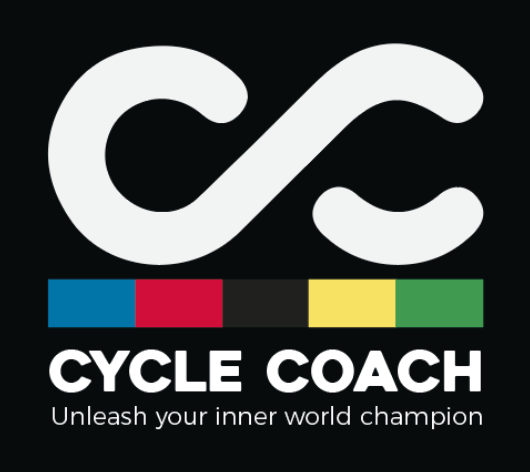Squats for Cyclists: a 40+ Strength Blueprint
Squats for Cyclists: a 40+ Strength Blueprint
Cycling gives you huge aerobic fitness — but it’s light on the tissues that keep you durable: bone, tendons, and the fast-twitch fibres that make you snap over a hill. After 40, those decline faster.
Squats are the simplest way to plug that gap — but only if you lift heavy enough to challenge the system. Heavy loading keeps the nervous system sharp and the muscles, tendons, and bones strong — if you dose them so tomorrow’s ride still feels good.
Why Squats Help Cyclists Over 40
Bone & tendon: Pedals don’t load the skeleton much. Squats provide the vertical loading your hips, knees, and ankles need to stay resilient.
Peak force & sprint: Strength raises the ceiling so surges cost less. You won’t magically raise FTP from squats alone, but you’ll handle torque better.
Injury buffer: Stronger hips and calves stabilise knees and reduce the “grumbly patella” many masters feel on long rides.
Women benefit even more: Heavy lifting boosts bone density and maintains lean muscle without adding unwanted size — it’s performance and long-term health in one.
Want a strength + cycling plan built for over-40 riders?
Join the CycleCoach Collective — power-based cycling plans, structured strength sessions, and TrainingPeaks Premium included for $75/month. 7-day free trial. Cancel anytime.
👉 https://www.cyclecoach.com/collective75
Choose the Right Squat
You don’t need a barbell back squat to win at cycling. Pick the one that lets you keep a neutral spine and hit depth without pain.
Goblet squat: Best all-rounder. Teaches bracing and knee tracking. Great for home gyms.
Safety-bar squat (if available): Upright torso, kinder to shoulders / backs.
Box squat to target depth: Park a box just above parallel. De-load the bottom range while you build control.
Split variations (rear-foot elevated): Reduce load per leg; excellent for hip stability.
Skip maximal-load low-bar squats if they flare your back. The goal is durable power, not a powerlifting total.
Sets, Reps, and Weekly Plan (2×/week)
Aim for two strength days most weeks. Start with 30–40 minutes total including warm-up. Slot them away from your key rides.
Template
Day 1 (heavier):
Goblet or safety-bar squat 3–5 × 4–6 @ RIR 2 (stop 2 reps before failure). Rest 2–3 min.
Pair with a hinge (hip-dominant) like Romanian deadlifts 3 × 6–8, plus a core carry 3 × 20–30 m.
Day 2 (power / control):
Squat variation 3–4 × 6–8 @ RIR 3 with 1–0–2 tempo (down in 2 s, up controlled).
Add split squats 3 × 8/side and a calf raise 3 × 10–12.
Want this programmed for you each week?
Join the CycleCoach Collective → https://www.cyclecoach.com/collective75
When to Lift
The best time to strength train is several hours after your key bike sessions — not before.
Ride first, especially if it’s a MIET, threshold, or VO₂max day.
Then lift later that day once you’ve refuelled and recovered a bit.
This stacks the hard work together so your recovery days stay light, and your weekly stress pattern stays balanced.
You’ll need a little extra protein and carbs to support both sessions, but the payoff is stronger adaptation and fresher legs for the next ride.
If your schedule doesn’t allow it, an AM/PM split still works — just keep heavy lifting on your harder ride days and leave recovery days easy.
Progress Without Wrecking Rides
Masters progress comes from consistency, not hero sessions.
Add load slowly: +2–5 kg only when the last set felt like RIR 3 or easier.
Earn range: If depth tweaks your knees, squat to a box for 2–3 weeks, then lower it.
Mind the quads: Soreness peaks 24–48 h. Keep the tougher strength day ≥48 h before key intervals.
Top-up with power: Once per week, add 3 × 3 bar-speed squats (light) or 3 × 5 jump squats (very light) when fresh.
Knees and Backs: Form That Lasts
Foot tripod: Heel, big toe, little toe pressed.
Knees track over second toe: Think “lightly push the floor apart.”
Brace first: Big breath 360° around the belt line; ribs stacked over pelvis.
Depth you own: Quality > depth. Never chase depth that steals your spine.
Mini-mobility (5 minutes): Half-kneeling ankle rocks (2 × 8/side), hip airplanes (2 × 5/side), and a 20-second hang from a bar for the back.
In-Season vs Off-Season
Off-season: 2×/week as above; nudge loads upward.
In-season: Keep 1–2×/week, drop a set, maintain loads. Taper 7–10 days before big events — keep speed, cut volume.
FAQ
Clipless shoes to squat? No — use flat shoes for stability.
Lift and ride same day? Yes — see “When to Lift” above.
Knee pain? Shorten range, add split squats, check that knees don’t collapse inward.
What does RIR mean? RIR stands for Reps in Reserve — how many reps you could still perform before failure.
So RIR 2 means you stop when you feel you could do two more good-form reps if you really had to.
It’s a simple way to gauge effort and manage fatigue without grinding every set to exhaustion.
Key Takeaway
Two short, well-placed squat sessions make your legs tougher without taxing tomorrow’s ride.
Keep two reps in reserve, progress slowly, and protect your joints with clean positions.
Heavy lifting — done right — is your strongest defence against age-related decline.
👉 Download The 6 Pillars of Masters Performance — your free guide to structure, recovery, strength, nutrition, consistency & durability.
Ready to rebuild strength and power this winter?
The CycleCoach Collective gives you:
• Power-based training plans
• Strength sessions tailored for cyclists 40+
• TrainingPeaks Premium included
• $75/month — 7-day free trial
Zero risk — cancel anytime
